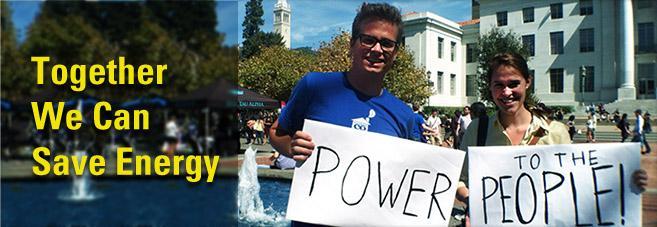Energy Goals

GOAL: Energy Efficiency--reduce energy use intensity by 2% annually.
STATUS: Ongoing
GOAL: By 2025, procure 100% clean electricity.
STATUS: Completed
Campus Performance Overview
The following are some of UC Berkeley’s current energy related accomplishments that campus continues to build upon:
-
Since 2008 Berkeley has implemented energy efficiency measures that have reduced carbon emission by 15,000 tons and saved millions of dollars.
-
Energy intensity per square foot has been reduced by 15% since 1990, while actual building space has grown 27%.
-
149 campus buildings have real-time energy use dashboards to visualize cumulative impact of individual energy savings and identify anomalies and malfunctions quickly.
-
Six campus locations use on-site solar power, and more on-site solar installations are in planning.
-
The campus has an Energy Use Policy with requirements to reduce energy use from heating, cooling, ventilation, lab equipment, and lighting through controls and equipment improvements.
-
By 2028, Berkeley plans to switch to a new clean and resilient energy system that will phase out fossil fuels and demonstrate emerging technologies. This will entail investing in aging infrastructure, creating a scalable clean microgrid model, and building research partnerships to achieve University, State and Federal energy and carbon goals. See the Berkeley Clean Energy Campus site for more information.
Renewable Energy Use

UC Berkeley partners on UC systemwide programs to develop and procure clean electricity. The campus participates in community choice and utility procurement options for 100% clean power for all eligible accounts.
STARS Performance Overview
Energy Category
According to STARS, "This subcategory seeks to recognize institutions that are reducing their energy consumption through conservation and efficiency, and switching to cleaner and renewable sources of energy such as solar, wind, geothermal, and low-impact hydropower. For most institutions, energy consumption is the largest source of greenhouse gas emissions, which cause global climate change."
Berkeley's STARS Performance
Total Points Available: 10.00
Energy Points Claimed: 6.87
-
UC Berkeley achieved 69% of available points in the STARS Campus Energy category.
-
The Energy Office is examining ways to reduce building energy consumption. The Office of Sustainability is examining how to maximize on-site renewable energy generation and storage on a dense urban campus with many historic buildings. In the short-term, the campus is seeking to add solar PV; but available space for such systems will only offset less than 5 to 10% of the power needs of the research intensive campus.
Research

The California Institute for Energy and Environment (CIEE), based in UC Berkeley at CITRIS and the Banatao Institute, is the site of innovative, collaborative, hands-on research.
Take Action!


1. Turn off what you are not using
-
Monitors and lights when you’re away for more than 15 minutes
-
Overhead lights when not needed, including in common areas
-
Individual printers and other equipment at night and on weekends
2. Buy energy efficient products
-
Make sure your new computer, appliance, and electronics purchases are ENERGY STAR
-
Choose LED light bulbs
3. Reduce the energy used by your computer
-
Enable the energy-saving features like sleep mode
-
Avoid screensavers, they cause newer monitors to use more energy
-
Reduce the brightness and bump up the contrast of your monitor
